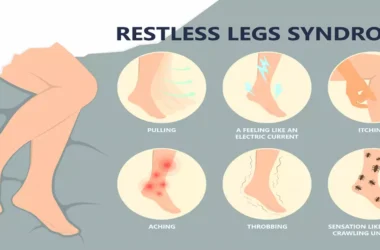Food poisoning is a common yet distressing condition that affects millions of people worldwide every year.
Consuming contaminated food or drinks can lead to various uncomfortable and sometimes severe symptoms.
Understanding the causes, recognizing the symptoms, and knowing how to prevent food poisoning are essential for maintaining good health.
What is Food Poisoning?
Food poisoning occurs when you ingest food or beverages contaminated with harmful bacteria, viruses, parasites, or toxins.
These contaminants can lead to an array of gastrointestinal issues, which may range from mild to severe. Common pathogens include Salmonella, E. coli, and norovirus.
Common Symptoms of Food Poisoning
Food poisoning manifests through various symptoms, often making it easy to identify. Here are the most common signs to watch for:
- Nausea and Vomiting: The body’s way of expelling harmful substances quickly.
- Diarrhea: Frequent, watery stools aimed at flushing out toxins.
- Abdominal Pain and Cramps: Indicate the digestive system’s response to the infection.
- Fever: A sign that the immune system is actively fighting off the infection.
- Headaches and Fatigue: General feelings of malaise that typically accompany foodborne illnesses.
- Loss of Appetite: A common reaction as the body tries to recover from the ingestion of harmful pathogens.
These symptoms can appear anywhere from a few hours to several days after consuming contaminated food and may last for a few hours up to several days.
Also Read: Understanding Shingles: Symptoms, Causes, and Treatments
Recognizing these signs early can help in seeking timely treatment and preventing further complications.
Causes of Food Poisoning
Food poisoning occurs due to the ingestion of food or beverages contaminated with harmful microorganisms or toxins. Here are the primary causes:
- Bacteria: Pathogens like Salmonella, E. coli, and Listeria are common culprits. These bacteria can contaminate a variety of foods, including raw or undercooked meats, poultry, dairy products, and even vegetables.
- Viruses: Norovirus and Hepatitis A are often spread through food prepared by infected handlers or contaminated water. These viruses can infect a wide range of foods.
- Parasites: Parasites such as Giardia and Toxoplasma can enter the food supply through undercooked meat or contaminated produce. These organisms can cause severe gastrointestinal issues.
- Toxins: Certain bacteria produce toxins that remain harmful even after cooking. For example, Staphylococcus aureus can contaminate food and produce toxins that lead to food poisoning symptoms.
High-Risk Foods
Some foods are more prone to contamination due to their nature or handling processes:
- Raw and Undercooked Meats: These can harbor harmful bacteria and parasites if not cooked properly.
- Dairy Products: Unpasteurized milk and cheeses are susceptible to contamination by Listeria.
- Seafood: Shellfish, especially raw oysters, can be contaminated with norovirus or Vibrio bacteria.
- Fruits and Vegetables: Improperly washed produce can harbor harmful bacteria and pesticides.
- Processed Foods: Foods that are not stored or handled correctly can become contaminated with pathogens like Listeria.
Understanding these causes is essential for taking the necessary precautions to avoid food poisoning and ensure the food you consume is safe.
Preventing Food Poisoning
Preventing food poisoning requires diligent attention to food handling, storage, and preparation practices. Here are some essential tips to keep your food safe:
Maintain Cleanliness
- Wash Hands Frequently: Always wash your hands with soap and water before and after handling food, especially raw meat, poultry, and seafood.
- Sanitize Surfaces: Clean kitchen surfaces, cutting boards, and utensils with hot, soapy water after each use to prevent cross-contamination.
Cook Food Thoroughly
- Use a Food Thermometer: Ensure meats, poultry, and seafood are cooked to safe internal temperatures to kill harmful bacteria. For example, cook poultry to at least 165°F (74°C) and ground meats to at least 160°F (71°C).
- Avoid Partially Cooking Food: Make sure foods are cooked completely in one go. Partially cooking food and then finishing it later can allow bacteria to grow.
Proper Storage
- Refrigerate Promptly: Store perishable foods at appropriate temperatures. Refrigerate leftovers within two hours of cooking to prevent bacterial growth.
- Organize Your Fridge: Keep raw meats and seafood on the bottom shelf to prevent their juices from dripping onto other foods.
Avoid Cross-Contamination
- Separate Raw and Ready-to-Eat Foods: Use different cutting boards and knives for raw meats and vegetables. Store raw foods away from cooked or ready-to-eat items.
- Seal and Store Properly: Use airtight containers to store food and prevent exposure to contaminants.
Wash Produce
- Rinse Thoroughly: Wash fruits and vegetables under running water to remove dirt, bacteria, and pesticides. Even produce with inedible skins should be washed, as cutting through the skin can transfer contaminants to the inside.
Safe Food Practices When Dining Out
- Choose Reputable Restaurants: Select eateries with high hygiene standards and good reviews for cleanliness.
- Inspect Your Food: Ensure your food is thoroughly cooked and served hot. Avoid dishes that appear undercooked or have a strange odor.
When to Seek Medical Attention
While most cases of food poisoning resolve on their own, certain situations require medical intervention:
- Severe Dehydration: Symptoms include dry mouth, excessive thirst, little or no urination, and dizziness.
- Prolonged Symptoms: Vomiting or diarrhea lasting more than three days.
- High Fever: A fever over 101.5°F (38.6°C) warrants medical attention.
- Blood in Vomit or Stool: This can indicate a severe infection.
- Neurological Symptoms: Blurry vision, muscle weakness, or tingling sensations require immediate medical care.
By following these preventive measures, you can significantly reduce the risk of food poisoning and ensure that the food you and your family consume is safe and healthy.
Conclusion
Food poisoning is an unpleasant but often preventable condition. By understanding the causes, recognizing the symptoms, and following proper food safety practices, you can reduce your risk and protect your health.
Always prioritize cleanliness in the kitchen, cook foods to safe temperatures, and store items correctly to avoid contamination.
If you experience severe or prolonged symptoms, seek medical advice promptly to ensure a swift recovery.




